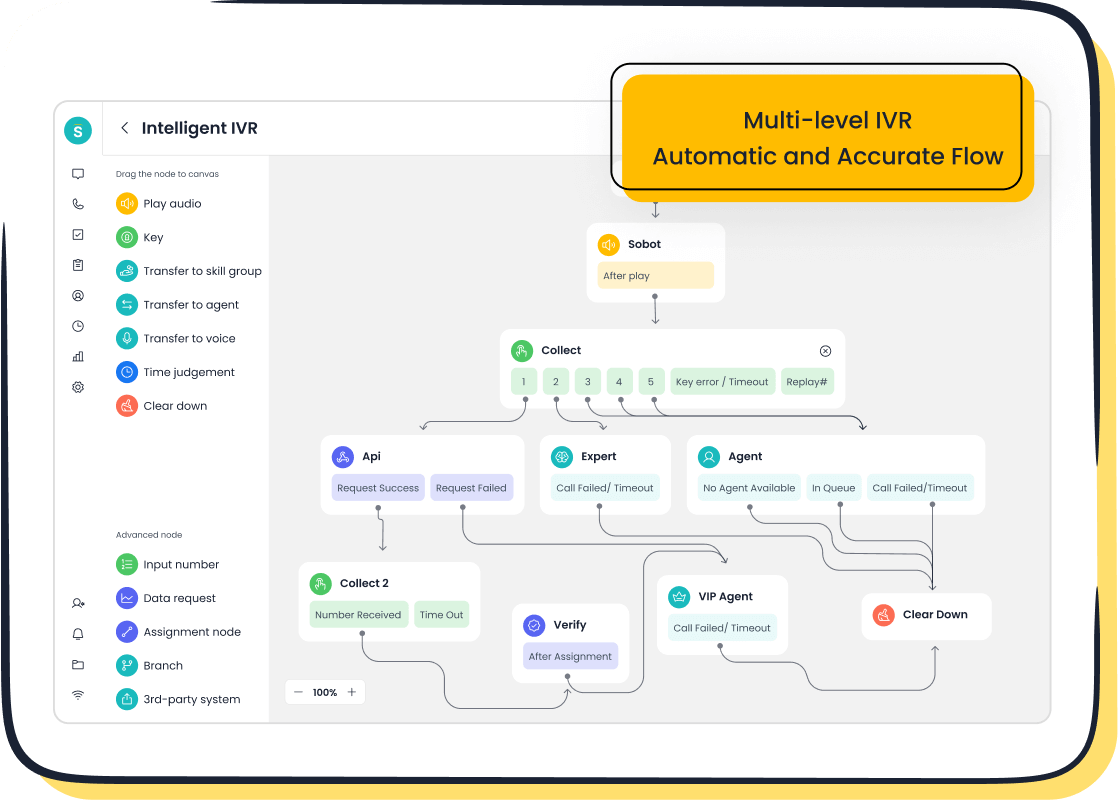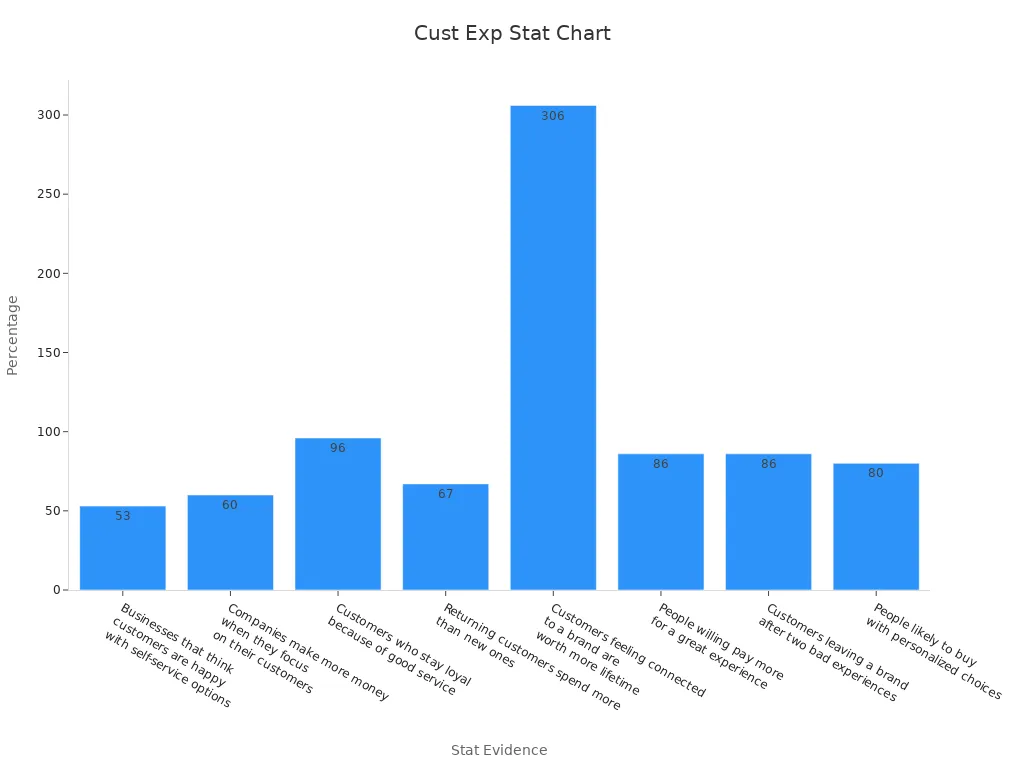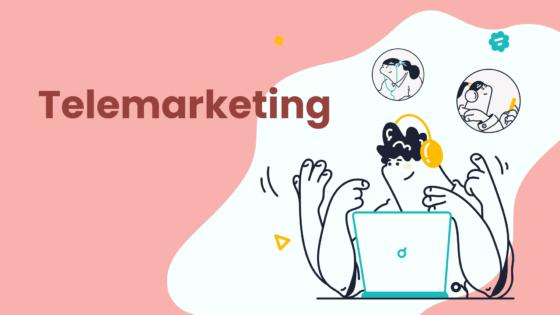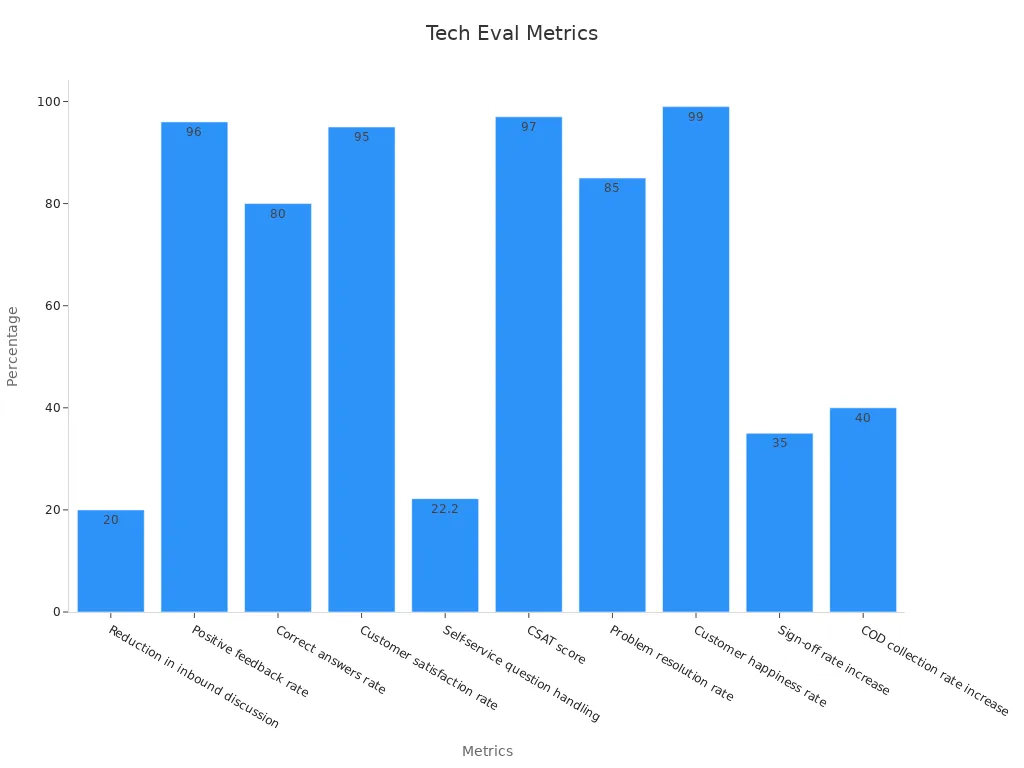How Customer Success Drives Better Customer Experience

Customer success plays a vital role in creating a seamless customer experience. By proactively helping customers achieve their goals, you can foster trust and satisfaction. Statistics reveal that 86% of buyers are willing to pay more for an exceptional experience, while companies focusing on customer success are nearly six times more likely to convert leads. Personalized interactions, a hallmark of great customer experience, drive 40% more revenue for fast-growing businesses.
With tools like Sobot’s customer experience software, you can unify communication channels, personalize support, and enhance operational efficiency. These strategies ensure your customers feel valued, leading to stronger loyalty and long-term success.
Understanding Customer Success
What Is Customer Success?
Customer success focuses on ensuring that customers achieve their desired outcomes while using your product or service. It’s a proactive approach that prioritizes customer satisfaction and long-term value. By guiding customers toward success, you build trust and loyalty, which are essential for sustainable growth.
Key metrics help define customer success in business contexts. These include:
- Customer Health Score: This metric identifies at-risk customers and predicts their likelihood to renew or churn.
- Customer Lifetime Value (CLV): It calculates the total revenue a customer generates throughout their relationship with your business.
- Customer Retention Cost (CRC): This metric evaluates the financial resources required to retain existing customers.
| Metric | Description |
|---|---|
| Customer Health Score | Measures the likelihood of customers to grow, renew, or churn, helping identify at-risk customers. |
| Customer Lifetime Value | Represents the total revenue expected from a customer throughout their relationship with the business. |
| Customer Retention Cost | Indicates the total cost associated with retaining existing customers, essential for financial stability. |
Key Responsibilities: Adoption, Retention, and Renewal
Customer success teams play a vital role in driving adoption, retention, and renewal. Adoption ensures that customers fully utilize your product’s features, creating value from the start. Retention focuses on maintaining strong relationships and preventing churn. Renewal secures ongoing business and strengthens customer loyalty.
Statistics highlight the importance of these responsibilities:
- Approximately 50.2% of customer success teams manage renewals.
- 42% handle upsells and expansions, contributing to revenue growth.
- Forecasting churn risks and identifying growth opportunities are integral to their role.
Retention begins with strong user adoption. Educating customers and building relationships are key strategies for enhancing adoption and creating long-term business value.
How Customer Success Teams Operate in Modern Businesses
Modern customer success teams rely on data-driven strategies to improve efficiency and outcomes. They track metrics like churn rate and account retention rate to identify trends and at-risk customers. Internal data provides insights into customer health, while external data reveals satisfaction levels and feature usage.
Teams use standardized processes to reduce errors and enhance operational efficiency. They transform raw data into actionable insights, enabling proactive engagement and personalized support. By leveraging tools like Sobot’s customer experience software, you can unify communication channels, automate workflows, and deliver seamless interactions.
Exploring Customer Experience

What Is Customer Experience?
Customer experience refers to the overall perception customers have of their interactions with your brand. It encompasses every touchpoint, from initial awareness to post-purchase support. A positive experience fosters loyalty, while a negative one can drive customers away. For example, Apple’s Genius Bar demonstrates how hands-on support can enhance customer satisfaction and loyalty. Similarly, Sephora’s Virtual Artist feature uses AR technology to improve the shopping experience and reduce return rates.
Customer experience management (CEM) involves strategies to meet or exceed customer expectations. By focusing on customer-centric innovation, you can align your products and services with genuine customer needs. This approach ensures that every interaction adds value, creating a seamless journey for your customers.
Core Focus Areas: Journey Mapping and Voice of the Customer (VoC)
Customer journey mapping provides a visual representation of the steps customers take when interacting with your brand. It helps you identify pain points and opportunities for improvement. For instance, mapping the journey can reveal where customers face delays or confusion, allowing you to address these issues proactively.
Voice of the Customer (VoC) programs collect feedback to understand customer experiences and expectations. This data highlights areas needing attention, such as improving first-contact resolution rates. Research shows that 93% of customers using call centers expect their inquiries resolved in one contact, yet 42% do not experience this, leading to a 15% drop in satisfaction. Combining journey mapping with VoC insights enables you to create a more cohesive and satisfying experience.
- Customer journey mapping visualizes interactions, uncovering areas for enhancement.
- VoC data identifies pain points and expectations.
- Together, they help businesses improve customer satisfaction and loyalty.
The Role of Customer Experience Software in Enhancing Interactions

Customer experience software plays a pivotal role in streamlining interactions and improving satisfaction. Tools like Sobot’s Voice/Call Center unify communication channels, enabling agents to manage inquiries efficiently. Features such as intelligent IVR and AI-powered voicebots ensure personalized and seamless experiences.
Statistics highlight the importance of such tools:
- 96% of customers remain loyal due to good service.
- 67% of returning customers spend more than new ones.
- 80% are more likely to buy when offered personalized choices.

By leveraging customer experience software, you can enhance operational efficiency and foster stronger connections with your customers. Sobot’s solutions, for instance, integrate advanced technologies like AI to provide real-time insights and personalized support, ensuring every interaction adds value.
The Connection Between Customer Success and Customer Experience
How Customer Success Impacts Customer Experience
Customer success directly influences customer experience by ensuring that customers achieve their goals while interacting with your brand. When you proactively guide customers toward success, you create a positive perception of your business. This approach builds trust and fosters loyalty, which are essential for long-term relationships.
Successful companies like Ritz-Carlton and Zappos demonstrate how customer success strategies enhance customer experience. Ritz-Carlton focuses on service excellence, leading to unmatched brand loyalty. Zappos, with its customer-centric culture and 24/7 support, has built a reputation for advocacy and satisfaction.
| Company | CX Strategies | Outcome |
|---|---|---|
| Ritz-Carlton | Focus on service excellence | Brand Loyalty |
| Zappos | Customer-centric culture, 24/7 support, free returns | Customer Loyalty and Advocacy |
| Disney | Immersive environments, emotional connection, customer feedback | Unmatched Customer Loyalty |
| Southwest Airlines | No hidden fees, friendly service, flexible policies | Customer Loyalty |
| Nike | Personalized app experience, omnichannel integration, customer engagement | Increased Customer Engagement |
| Tesla | Direct sales, over-the-air updates, customer education | Enhanced Customer Experience |
By aligning customer success with customer experience strategies, you can replicate these outcomes. For instance, Sobot’s Voice/Call Center helps businesses unify communication channels and provide seamless interactions, ensuring customers feel supported at every touchpoint.
Proactive Engagement and Personalized Support
Proactive engagement is a cornerstone of effective customer success. Reaching out to customers before they encounter issues demonstrates your commitment to their success. Research shows that 92% of consumers feel more positive about businesses that contact them proactively, and 85% prefer organizations that communicate in this way.
| Strategy | Insight |
|---|---|
| Proactive Engagement | Prevents issues before they escalate, leading to higher satisfaction. |
Personalized support further enhances the customer experience. Customers expect tailored interactions, with 71% stating that personalization improves their experience. Businesses that deliver personalized support see significant benefits, including increased retention and higher sales opportunities.
| Area of Benefit | Customer Statistics | Business Impact |
|---|---|---|
| Customer Retention | 76% willing to purchase from personalized brands | Increases customer lifetime value and loyalty. |
| Enhanced Experience | 71% expect personalization | Boosts satisfaction and positive brand perception. |
| Sales Opportunities | 39% likely to buy more after personalization | Encourages upselling opportunities. |
| Competitive Advantage | Hard to replicate tailored experiences | Attracts and retains more customers. |
Sobot’s AI-powered solutions, such as its Voice/Call Center, enable businesses to deliver proactive and personalized support. Features like intelligent IVR and AI-powered voicebots ensure that customers receive timely assistance tailored to their needs, improving satisfaction and loyalty.
Leveraging Data-Driven Insights for Better Experiences
Data-driven insights are essential for understanding and improving customer experience. By analyzing customer behavior, preferences, and feedback, you can identify pain points and address them effectively. For example, tracking metrics like churn rate and customer health score helps you uncover the reasons behind customer dissatisfaction and take corrective action.
| Metric | Description | Impact on Customer Experience (CX) |
|---|---|---|
| Churn Rate | Measures the percentage of customers discontinuing use over a period. | Helps identify emotional and experiential triggers behind customer exits. |
| Customer Health Score (CHS) | Evaluates customer engagement, usage frequency, and satisfaction. | A low CHS correlates with a poor customer experience, indicating disengagement factors. |
| Net Revenue Retention (NRR) | Measures revenue retained from existing customers. | Provides insight into the value derived from a product, while CX metrics reveal retention drivers. |
| Service/Product Adoption Rate | Tracks the percentage of customers using key features. | Successful adoption depends on effective onboarding and usability, illuminated by CX feedback. |
| Customer Lifetime Value (CLV) | Total revenue a customer generates over their relationship. | A positive CX boosts CLV by fostering longer relationships and higher spending. |
| Time to Value (TTV) | Time taken for customers to realize value from a product. | Faster TTV enhances satisfaction, especially with seamless onboarding. |
Using tools like Sobot’s customer experience software, you can harness these insights to create personalized experiences, automate workflows, and improve operational efficiency. For example, Sobot’s unified workspace allows agents to access customer data in real time, enabling them to provide tailored solutions and resolve issues faster. This data-driven approach not only enhances customer satisfaction but also drives business growth.
Benefits of Aligning Customer Success and Customer Experience

Improved Customer Satisfaction and Loyalty
Aligning customer success with customer experience creates a seamless journey for your customers. When you focus on helping customers achieve their goals, they feel valued and supported. This approach enhances customer satisfaction and builds loyalty over time. For example, 80% of customers value their experience as much as the products or services they purchase. By prioritizing their needs, you can foster stronger relationships and reduce churn.
Proactive engagement plays a key role in improving satisfaction. Anticipating customer needs and resolving issues before they arise demonstrates your commitment to their success. A financial services company reduced defections by 16% through targeted improvements in customer experience. This highlights how aligning these strategies can lead to measurable benefits.
| Statistic | Implication |
|---|---|
| 89% of businesses are expected to compete primarily on CX by 2025 | This indicates a shift towards prioritizing customer experience over traditional factors like product and price. |
| 80% of customers value their experience as much as products or services | Highlights the importance of customer experience in influencing customer behavior and satisfaction. |
| 40% of customer service organizations will adopt proactive strategies by 2025 | Proactive engagement can lead to anticipating customer needs and resolving issues before they escalate, enhancing satisfaction. |

Enhanced Collaboration Across Teams
Collaboration between customer success and customer experience teams ensures a unified approach to serving your customers. When teams share insights and work together, they can address customer needs more effectively. This collaboration increases productivity and improves decision-making. Workers who embrace collaboration stick to tasks 64% longer, leading to better outcomes for customers.
A unified strategy also eliminates silos, allowing teams to share data and insights seamlessly. For instance, customer success teams can provide feedback on product adoption, while customer experience teams can highlight pain points from customer interactions. This exchange of information ensures that every department contributes to a better overall experience.
- Increased productivity: Collaboration leads to a more productive workforce.
- Improved decision-making: Teams working together make better decisions, enhancing customer satisfaction.
Driving Organizational Growth and Revenue
Aligning customer success and customer experience drives business growth by improving retention and increasing revenue. Satisfied customers are more likely to remain loyal and advocate for your brand. This advocacy reduces acquisition costs and boosts revenue. Streamlining the customer journey and reducing churn rates further contribute to growth.
Businesses that align these functions also see financial benefits. For example, enabling customer success teams to handle renewals and upselling opportunities leads to higher revenue. Early Time to Value (TTV) ensures customers realize the benefits of your product quickly, increasing satisfaction and loyalty. These strategies create a cycle of success that fuels long-term business growth.
- Streamlining the customer journey
- Increasing customer advocacy
- Reducing churn rates
- Driving early Time to Value (TTV)
By focusing on customer success and customer experience, you can achieve sustainable growth while delivering exceptional value to your customers.
Strategies for Aligning Customer Success and Customer Experience
Foster Cross-Functional Collaboration Between Teams
Cross-functional collaboration is essential for aligning customer success and customer experience. When teams work together, they can share insights and create a unified approach to serving customers. This eliminates silos and ensures that every department contributes to a seamless experience.
Research from Forrester highlights that companies with siloed customer experiences face slower growth and higher acquisition costs. By integrating customer insights across departments, you can enhance both customer success and experience. For example:
- Workflow Redesign for Product Change: Teams collaborated on a value-stream mapping exercise, aligning product development with customer needs.
- Hybrid Office Transformation: Customer success, product development, and data analytics teams worked together to improve user experience and operational efficiency.
- Cost Reduction Initiative: Open communication among teams led to an 18% reduction in production costs.
A technology company president improved collaboration by organizing informal brainstorming sessions and cross-functional projects. This approach fostered open communication, enabling faster responses to customer feedback. As a result, the company refined its products and improved customer satisfaction.
Use Shared Metrics to Measure Success
Shared metrics provide a clear picture of how well your customer-focused teams are performing. By using common measures, you can align goals and ensure that everyone works toward the same objectives. Metrics like Net Promoter Score (NPS) and Customer Effort Score (CES) are particularly effective for evaluating customer perceptions and experiences.
Consider these key metrics:
- Net Promoter Score (NPS): Measures customer loyalty by asking how likely they are to recommend your company.
- Customer Effort Score (CES): Assesses how easy it is for customers to interact with your services.
- Customer Churn Rate (CCR): Tracks the percentage of customers who stop using your service, reflecting overall satisfaction.
Shared metrics also improve team engagement and adoption of best practices. For instance, staff engagement measures how well team members understand the importance of knowledge sharing. When teams adopt these practices, they can better address customer needs and enhance the overall experience.
Invest in Tools Like Sobot’s Voice/Call Center for Seamless Interactions
Investing in advanced tools like Sobot’s Voice/Call Center can transform how you manage customer interactions. These tools unify communication channels, enabling your team to provide consistent and efficient support. Features like intelligent IVR and AI-powered voicebots ensure personalized experiences, reducing response times and improving satisfaction.
Here’s how Sobot’s Voice/Call Center delivers results:
| Metric | Value |
|---|---|
| Reduction in inbound discussion | 20% |
| Positive feedback rate | 96% |
| Correct answers rate | 80% |
| Customer satisfaction rate | 95% |
| Self-service question handling | 22.2% |
| Customer satisfaction score (CSAT) | 97% |
| Problem resolution rate | 85% |
| Customer happiness rate | 99% |
| Sign-off rate increase | 35% |
| COD collection rate increase | 40% |

Sobot’s customer experience software integrates seamlessly with existing systems, offering features like global number availability, real-time monitoring, and AI-powered analytics. These capabilities help you deliver proactive and personalized support, ensuring every interaction adds value. By investing in such tools, you can enhance operational efficiency and foster stronger customer relationships.
Customer success and customer experience work hand in hand to create a seamless journey for your customers. By focusing on proactive engagement, personalized support, and data-driven strategies, you can ensure that every interaction adds value. Tools like Sobot’s customer experience software enable you to unify communication channels, automate workflows, and deliver tailored solutions that enhance satisfaction.
The effectiveness of these strategies is evident in measurable outcomes. For example:
| Source | Metric/Outcome | Impact on Customer Experience |
|---|---|---|
| McKinsey | Cross-functional collaboration | 20% improvement in CX |
| Customer satisfaction | 15% increase | |
| Forrester | Measuring and acting on CX metrics | 20% increase in satisfaction |
| Revenue | 15% increase | |
| Bain & Company | Acting on CX insights | 10-20% increase in loyalty |
| Revenue | 10-20% increase | |
| Forrester | Leveraging AI for CX | 10-20% increase in satisfaction |
By fostering collaboration between teams and leveraging advanced tools, you can achieve superior outcomes. These efforts not only improve customer satisfaction but also drive loyalty and revenue growth.
FAQ
What is the difference between customer success and customer experience?
Customer success ensures that customers achieve their goals with your product or service. Customer experience focuses on how customers perceive their interactions with your brand. While customer success is proactive, customer experience encompasses every touchpoint, from awareness to post-purchase support.
How does customer success improve customer satisfaction?
Customer success teams guide customers toward achieving their goals. This proactive approach reduces frustration and builds trust. When customers feel supported and valued, their satisfaction increases, leading to stronger loyalty and long-term relationships.
Why is customer feedback important for improving customer experience?
Customer feedback provides insights into what customers value and where they face challenges. By acting on this feedback, you can address pain points, enhance satisfaction, and create a seamless experience. Listening to customer feedback also shows that you value their opinions.
How can tools like Sobot’s Voice/Call Center enhance customer interactions?
Sobot’s Voice/Call Center unifies communication channels, enabling agents to provide consistent support. Features like intelligent IVR and AI-powered voicebots ensure personalized and efficient interactions. These tools improve response times and help you deliver a better overall experience.
What metrics should you track to align customer success and customer experience?
Key metrics include Net Promoter Score (NPS), Customer Effort Score (CES), and Customer Lifetime Value (CLV). These metrics help you measure satisfaction, ease of interaction, and the overall value customers derive from your product or service.
See Also
Enhance Customer Satisfaction With These 10 Live Chat Tips
Transforming Support Through AI Customer Service Agents
Increasing E-commerce Satisfaction With Effective Chatbots